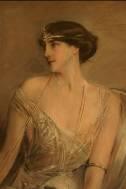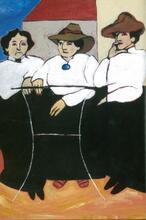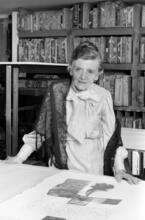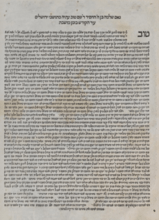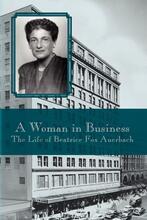Peggy Guggenheim
After her father died on the Titanic, Peggy Guggenheim inherited a large trust fund which she used to travel to Europe in search of escape from conventional American life. She began collecting art in the early 1930s, opening a London art gallery in 1938 with the help of Marcel Duchamp. Rising tensions in Europe forced her to close the gallery soon after its opening, but she continued buying modern art in France until just days before the Germans entered Paris. She fled to the United States and opened a new gallery, Art of the Century, in which she showcased the works of both famous artists and relative unknowns. In 1949, she moved into a palazzo in Venice where she displayed her art collection to the public, and which was later turned into a museum.
Early Life
Born Marguerite Guggenheim in New York City to Florence (Seligman) and Benjamin Guggenheim, Peggy Guggenheim amassed what is now considered to be Italy’s most important modern art collection. Her collecting ability was certainly the result of her exposure, at an early age, to the German Jewish emphasis on Kultur. The Seligmans were members of the academic and artistic world. As wealthy German Jewish Americans, opera boxes, grand tours of Europe, and the purchase of priceless paintings characterized their life-style, which certainly influenced Peggy.
She was also influenced by her family’s financial successes. Both the Seligman and Guggenheim families were very wealthy, and Peggy Guggenheim received a share of this wealth at age twenty-one, when she came into her inheritance. Her father, who lost his life on board the Titanic, left his daughter with a trust fund of $450,000, which provided her with a yearly income of $22,000. These resources allowed her to begin her collecting career.
Before she could make a name for herself, Guggenheim decided to escape what she considered her banal New York life and traveled to Europe. She began to adopt a less conventional life-style, wearing outrageous sunglasses and leopard-print handbags and walking two small dogs.
In 1922, Guggenheim married writer Lawrence Vail, the “King of Bohemia,” hoping that he would bring some excitement into her life. The couple had two children, Sinbad and Peegan, but the marriage ended in divorce in 1930.
Art Collecting
Remaining in Europe, Guggenheim discovered the art world, and she was intrigued by the notion that she could both help artists and make a profit through sales. Attracted to modern art, Guggenheim learned as much as she could about this movement with the help of Marcel Duchamp. On January 24, 1938, she opened her own gallery in London, called the Guggenheim Jeune. It was her hope that this gallery would become a London version of New York’s Museum of Modern Art. However, given the dangerous conditions developing in Europe at this time, she decided to abandon the Guggenheim Jeune, but without abandoning her career in the art world. Residing in France, she was determined to use the money she had set aside for the London gallery to purchase one picture a day. Refusing to let the political chaos stop her completely, she walked into Fernand Léger’s studio the day before Hitler conquered Norway and bought Men in the City for one thousand dollars. By 1940, Guggenheim had collected fifty works. However, her last name had begun to draw many questions from authorities, and she knew it was time to leave Europe. Three days before the Germans entered Paris, she left for America.
In America, Guggenheim’s career in the art world continued at full force. In 1941, she married the artist Max Ernst, whom she would divorce five years later. After her wedding, she worked to establish Art of the Century, a gallery in which she displayed works by both prominent and unknown artists.
By the end of World War II, Guggenheim was eager to return to Europe. In the spring of 1949, she moved into the unfinished eighteenth-century Palazzo Venier dei Leoni on Venice’s Grand Canal. It was here that she displayed part of her collection to the public. She had amassed works by the pioneers of the twentieth century, including Pablo Picasso, Salvador Dali, Léger, Max Ernst, and Jackson Pollock. In 1974, she gave her collection and the Palazzo to the Solomon Guggenheim Foundation, established in 1937 by her uncle, who was also an art collector. Peggy Guggenheim died in 1979, leaving the Solomon Guggenheim Museum in charge of her legacy.
For the most part, being Jewish was something Guggenheim tried to hide. She admitted feeling more comfortable around non-Jews and was sometimes accused of being antisemitic. However, in her memoirs, Guggenheim does not deny her faith. She discusses her family’s Jewish heritage and how she found solace in saying the Lit. (Aramaic) "holy." Doxology, mostly in Aramaic, recited at the close of sections of the prayer service. The mourner's Kaddish is recited at prescribed times by one who has lost an immediate family member. The prayer traditionally requires the presence of ten adult males.kaddish upon her father’s death.
Selected Works by Peggy Guggenheim
Out of This Century: Confessions of an Art Addict (1979).
[Combines two memoirs: Out of This Century (1946) and Confessions of an Art Addict (1960).]
Fields, Jill. “Was Peggy Guggenheim Jewish?: Art Collecting and Representations of Jewish Identity In and Out of Postwar Venice,” Nashim: A Journal of Jewish Women's Studies & Gender Issues 25 (Fall 5774/2013), 51-74.
Smithsonian (July 1986): 58.
Town and Country 150, no. 5190 (March 1996): 30.
Weld, Jacqueline Bograd. Peggy: The Wayward Guggenheim (1986).
WWWIA 7.

